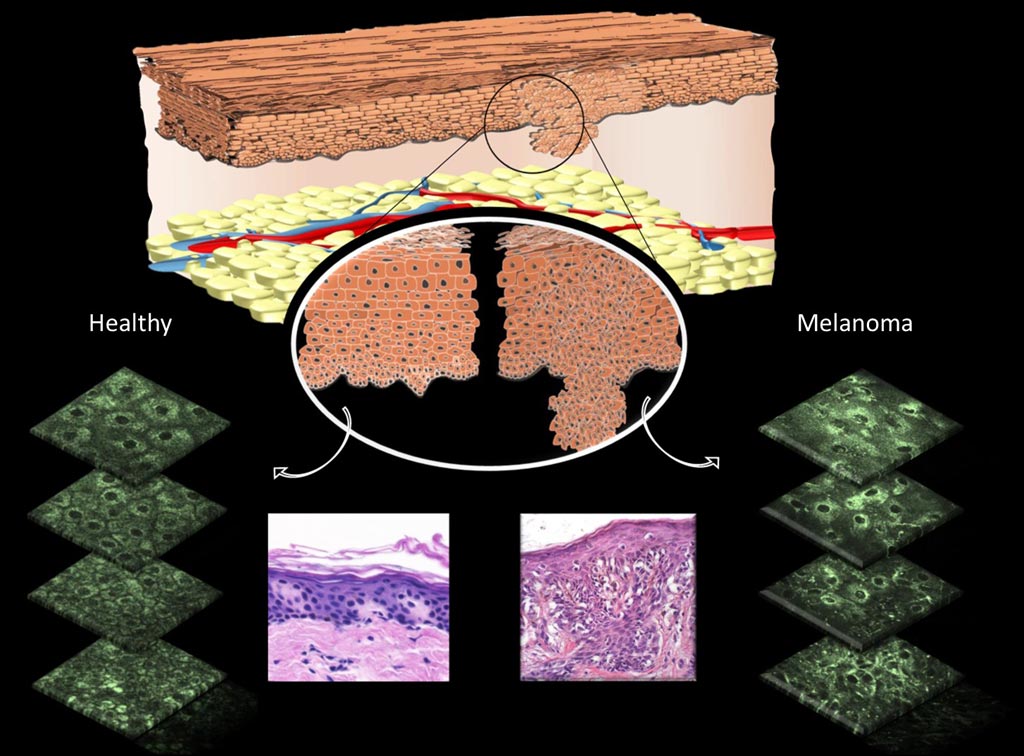Technique Developed to Diagnose Skin Cancer without Biopsy
By LabMedica International staff writers
Posted on 28 Feb 2017
Researchers have developed a noninvasive method that accurately identified skin cancer by using multiphoton microscopy to quickly detect abnormal clusters of mitochondria in skin cells.Posted on 28 Feb 2017
Most types of skin cancer are highly treatable, especially if detected early. “The technology developed here has the potential to make the detection of skin cancers extremely rapid and feasible at very early stages,” said Behrouz Shabestari, PhD, of National Institute of Biomedical Imaging and Bioengineering, which largely funded the study, “Rather than taking a biopsy sample that must be processed and then examined under a microscope by a pathologist, this system involves simply looking through the microscope at the patient’s skin and determining whether it is cancerous or not, within minutes.”

Image: A diagram showing differences that can be observed in cell morphology in normal skin cells versus melanomas (Photo courtesy of Irene Georgakoudi, Tufts University).
A group of international collaborators led by co-senior author Irene Georgakoudi, PhD, of Tufts University, found that mitochondria behave very differently in healthy versus cancerous tissue. They used a laser microscopy technique that takes advantage of characteristics of the mitochondrial compound nicotinamide adenine dinucleotide (NADH), which naturally fluoresces without injecting any dye or contrast agent into the individuals being screened. They found that NADH can be detected using multiphoton microscopy to provide diagnostically useful information about the organization of the mitochondria in skin cells.
“The system allows us to obtain very high-resolution images of individual cells without having to slice the tissue physically,” explained Dr. Georgakoudi, “we found that in normal cells the mitochondria are spread throughout the cell in a web-like pattern. Conversely, cancerous skin cells show a very different pattern with the mitochondria found in clumps or clusters typically at the center of the cell along the border of the nucleus.”
In this study the technique was tested in 10 patients with skin cancer (melanoma or basal carcinoma) and 4 without skin cancer. When compared to the traditional biopsy results obtained from each patient, the results demonstrated that the imaging technique correctly identified skin cancer in all 10 cancer patients, and made no false diagnoses in the four individuals without skin cancer.
Dr. Georgakoudi estimates that this test could be used routinely within five years, but the USD 100,000 price of the laser used in this microscope would limit the facilities that could make the investment. “Less-expensive lasers are on the horizon,” said Dr. Georgakoudi, “However, this approach would enable a doctor to make a quick diagnosis and begin treatment immediately, which could ultimately lower healthcare costs associated with these very common cancers.”
The study, by Pouli D et al, was published November 30, 2016, in the journal Science Translational Medicine.













